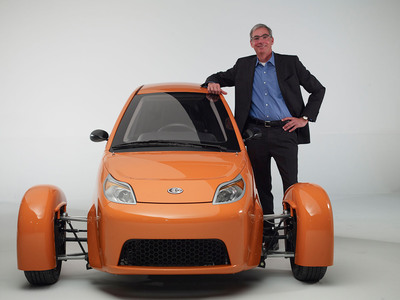Toyota to recall nearly 6.5 million vehicles for steering, other faults
Toyota recalls about 6.4 million vehicles globally Associated Press
Toyota recalls 6.39 million vehicles worldwide AFP
Nissan recalls 990,000 cars in N. America over airbag issue AFP
GM recalls 1.3 million cars for steering defect Associated Press
U.S. fines GM for not answering recall questions Reuters
TOKYO (Reuters) – Toyota Motor Corp, in its second-largest recall announcement, said on Wednesday that it would call back 6.39 million vehicles globally after uncovering five different faults involving parts ranging from steering to seats.
The world’s biggest automaker said it was not aware of any crashes or injuries caused by the glitches, which were found in 27 Toyota models including the RAV4 and Yaris subcompact.
Toyota said faults were also found in the Pontiac Vibe and the Subaru Trezia, two models the automaker built for General Motors and Fuji Heavy Industries.
The automaker did not say how much the recalls would cost, and it was not clear if the faults stemmed from Toyota’s suppliers or its manufacturing process.
The move by Toyota to announce five different recalls on a single day from Tokyo comes as major automakers face increasing scrutiny in the United States on how quickly they take preventive safety action and how quickly they share information with regulators and the public.
Toyota agreed last month to pay $1.2 billion to the U.S. government for withholding information related to unintended acceleration in its vehicles. That safety crisis had caused Toyota to recall more than 9 million vehicles.
In a high-profile case that has the potential to change U.S. safety regulation, Toyota rival General Motors is under investigation for failing to act on a known ignition switch defect linked to a dozen deaths. The company has recalled 1.6 million vehicles over the issue.
In the largest of the recalls announced on Wednesday, Toyota said some 3.5 million vehicles were being recalled to replace a spiral cable that could be damaged when the steering wheel is turned. That could cause the air bag to fail in the event of a crash, the automaker said.
In total, about 2.34 million of the vehicles to be recalled were sold in North America. Another 810,000 were sold in Europe.
In the second-largest of the Toyota recalls, some 2.32 million three-door models made between January 2005 and August 2010 are being recalled to check for a fault in the seat rails that could cause the seat to slide forward in a crash, risking injury for the driver or passengers.
The other recalls are for faulty steering column brackets, windshield wiper motors and engine starters.
The recall announcement, which came during late afternoon Tokyo trade, knocked an additional 2 percent off Toyota’s already sagging shares.
They quickly pared the extra losses, however, and ended down 3 percent at 5,450 yen, reflecting an overall weak tone in the market where the benchmark Nikkei average fell 2.1 percent.
Toyota’s 6.39 million vehicle recall is the largest announced on a single day for the company since October 2012, when it called back 7.43 million Yaris, Corolla and other models to fix faulty power window switches.
In the first two months of 2014, major automakers had announced 18 separate recalls in the United States, now the second-largest auto market behind China, according to the latest data compiled by the National Highway Traffic Safety Administration.
The recent wave of large-scale recalls represents a source of revenue for auto dealers who are paid by manufacturers to service defective cars.










